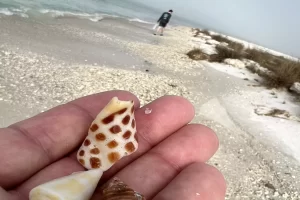“How to Find a Junonia” is one of the top shelling secrets every sheller wants to know the answer to. Few experiences capture the magic of a Marco Island vacation like stumbling across a Junonia shell. It’s the ultimate prize for shell collectors, a treasure that sparks broad smiles, quick photos, and excited calls of “look what I found!” For families, it’s not just about the shell itself but the story of how you found it—the early morning walk, the quiet beach, or the boat ride out to a deserted island where the discovery happened.
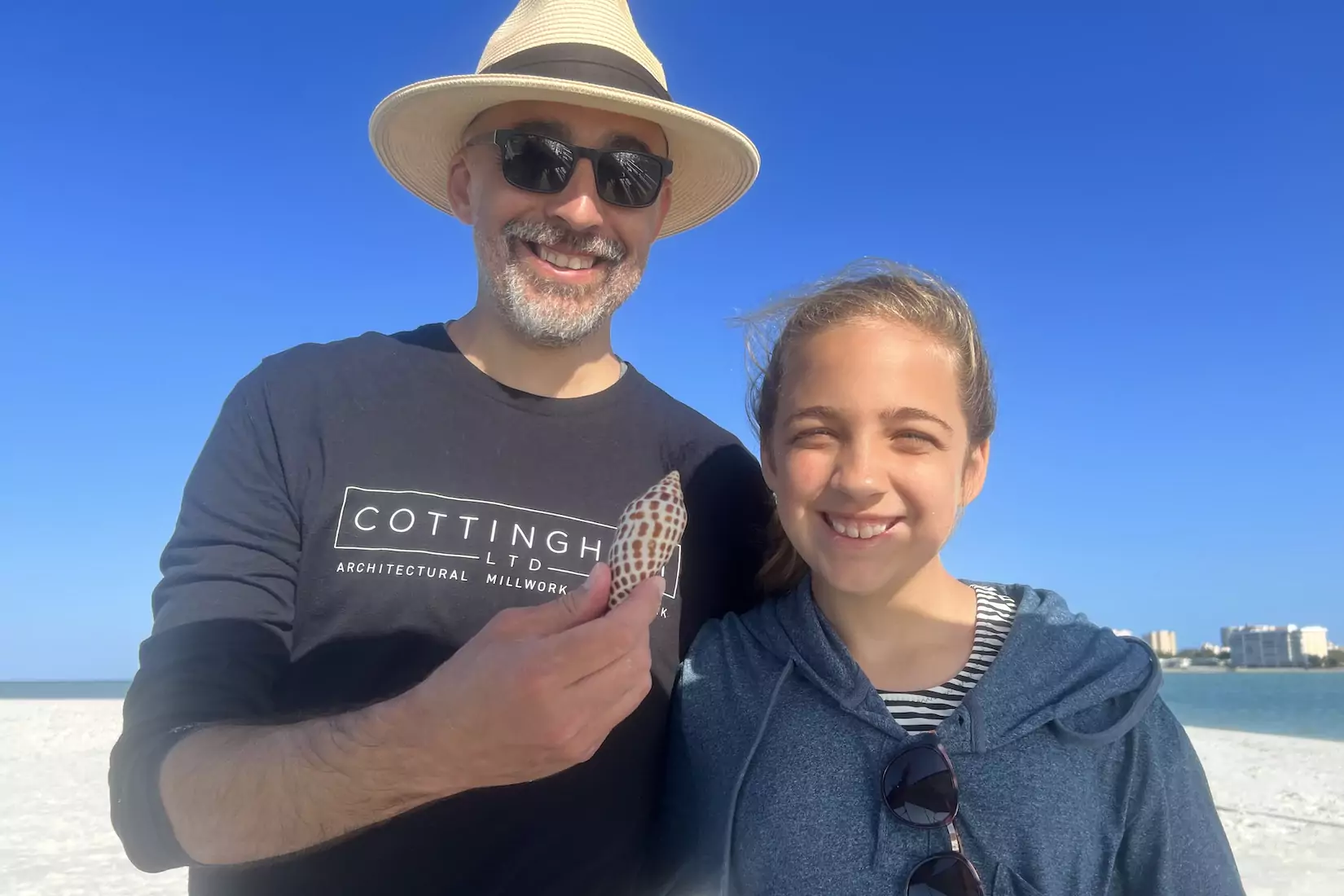
In this guide, you’ll learn everything you need to know about how to find a Junonia on Marco Island. From understanding why the shell is so rare to knowing the best times and places to search, you’ll walk away ready for your own family treasure hunt.
Why the Junonia Captures Hearts
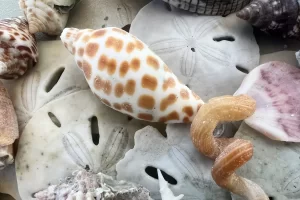 The Junonia is no ordinary seashell. Its elongated shape, creamy ivory color, and chocolate-brown spots give it an instantly recognizable beauty. But what makes it so special is its rarity.
The Junonia is no ordinary seashell. Its elongated shape, creamy ivory color, and chocolate-brown spots give it an instantly recognizable beauty. But what makes it so special is its rarity.
Unlike scallops or sand dollars, which you can often find scattered across the shoreline, Junonias live in deeper waters—thirty to one hundred feet below the surface. These shells belong to a sea snail that rarely ventures close to shore. The only way they appear on beaches is when storms, tides, or currents carry them in. That means every Junonia you see has traveled a remarkable journey from the Gulf floor to the sand beneath your feet.
This rarity explains why finding one is often compared to winning the lottery in the shelling world. Locals and seasoned shellers celebrate each discovery as if it were their first. For kids and parents alike, that element of surprise is what makes the Junonia so magical.
How to find a Junonia: Begin Your Search
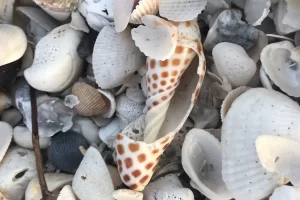 Marco Island’s Remote Treasure Troves
Marco Island’s Remote Treasure Troves
The best Junonia hunts don’t usually happen on the busiest stretches of Marco Island’s public beaches. While South Beach and Tigertail are excellent for family outings, the chances of finding a Junonia there are slim, simply because more people scour the sand every day.
Instead, your odds increase dramatically on the remote barrier islands and hidden sandbars nearby. Florida Island Tours often takes guests to places like Kice Island, “Second Chance” Shell Island, and secluded sandbars in the Ten Thousand Islands. These untouched areas see fewer feet and hands combing through the sand, leaving more treasures for those who make the trip.
Caxambas Pass and Its Shifting Sands
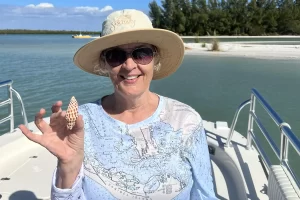
After Storms and Strong Tides
Timing is just as important as location. Junonias are most likely to wash ashore when the Gulf stirs up its sandy bottom. Summer thunderstorms and winter cold fronts often deliver rare shells to the beaches. If you’re on Marco Island during or just after a storm, grab your bucket and head out as soon as it’s safe.
How to find a Junonia: The Best Times to Seek a Junonia
 Early Mornings at Sunrise
Early Mornings at Sunrise
If there’s one universal tip every sheller agrees on, it’s this: get out early. At sunrise, the beach is quiet, the air is cool, and the waves reveal the night’s collection. Kids love the sense of adventure in being the first ones on the sand, and parents enjoy the calm start to the day.
Winter Months with Stronger Tides
While shells can arrive year-round, winter tends to bring stronger tides, which stir up the ocean floor and carry shells farther in. That said, families shouldn’t feel limited to one season. Many people have found Junonias in the middle of summer when they least expected it.
Low Tide Walks
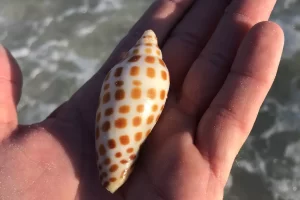
What to Bring on Your Adventure
Shelling is simple, but a little preparation makes the experience much smoother. Families especially benefit from having the right gear when kids are involved.
Bring a mesh bag or bucket to carry your finds, since it allows water and sand to drain out. Water shoes protect feet from sharp shells and hidden rocks, especially in shallow tide pools. Don’t forget sunscreen, hats, and sunglasses—the Florida sun is intense, even in the morning. A small shovel or scoop can help kids dig in shell piles where treasures often hide just beneath the surface.
Finally, bring patience. Hunting for a Junonia isn’t guaranteed, and that’s part of the thrill. Some families make a game out of spotting the most unusual shell, while others keep count of how many sand dollars or whelks they can collect before heading back.
How to find a Junonia: Unmistakably Recognizable
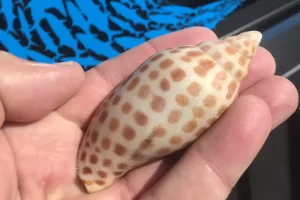
Sometimes faded shells or broken fragments can trick beginners, but that’s part of the learning process. Many families save fragments as keepsakes, considering them half-victories on the path to finding a whole specimen.
Stories from the Shore
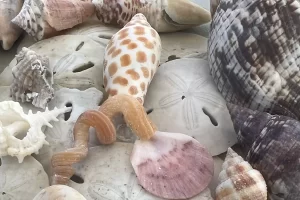
These stories get retold year after year. Families who return to Marco Island often bring along their Junonia as a good-luck charm, or they display it proudly at home as a reminder of their beach adventure.
How to find a Junonia: Fun Fact
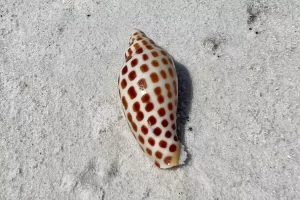
The average avid sheller will seek out the rare Junonia shell for years if not decades. It probably averages 20 years of consistent shelling to find one. There is a saying, “You don’t find a junonia, your ‘J’ finds you.”
You can definitely increase your chances of finding one by going on a shelling tour with an experienced shelling guide. They are basically “professional shellers” and see where the Junonia shell shows up month after month, year after year. Their expertise can point you in the right direction.
How to find a Junonia: Captain’s Tip
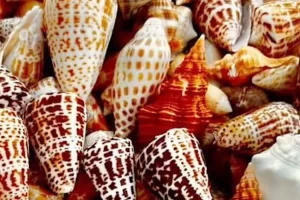
After storms, they’ll often adjust trips to target the sandbars and islands that produce the best treasures. Many guests have walked away with their first Junonia thanks to the captain’s expertise.
Want to know the best time to find a Junonia? Any expert shelling captain will tell you without a doubt, go in the morning, on low tide, after a storm. Of course, you can’t always have all three factors in your favor, but one or two will increase the chance of it being a ‘J’ Day.
Turning the Hunt into Family Fun
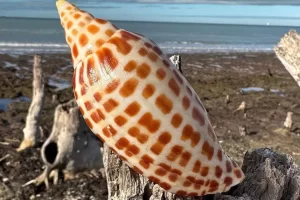
Children, in particular, love the sense of mystery. Parents can turn the hunt into a scavenger game: Who can find the first sand dollar? Who will spot the biggest whelk? And who will be the lucky one to find the elusive Junonia?
Even if you don’t find one, you’ll still collect treasures that feel priceless—starfish sightings in the shallows, dolphins playing offshore, or the simple memory of watching the sunrise over the Gulf together.
Preserving and Displaying Your Treasure
If you’re lucky enough to find a Junonia, you’ll want to keep it safe. Rinse it gently with fresh water to remove sand and salt. Some families like to soak shells in a mild bleach solution for cleaning, though be careful not to damage the delicate patterns.
Once clean, you can display your Junonia in a glass jar, on a shelf, or even mounted in a shadow box. Many collectors keep theirs separate from other shells to highlight its rarity. It becomes not just a souvenir but a family story passed down through generations.
Respecting the Beach and Its Wildlife
Shelling is a joyful activity, but it comes with responsibility. Always check that shells are empty before collecting them—live shells should be returned to the water.
Florida law prohibits taking live shells, including sand dollars and starfish. Live sand dollars may be the easiest shell to take alive by accident. If the sand dollars are white, you’re ok! If they are covered in tiny spines and look furry, leave them be!
Teaching kids this ethic helps them appreciate the balance of nature and ensures that future visitors can enjoy the same wonders.
How to find a Junonia: Final Thoughts
Learning how to find a Junonia on Marco Island is about more than tips and timing. It’s about embracing the adventure, creating family traditions, and appreciating the natural beauty that makes this island so special. Whether you find one on a remote barrier island with Florida Island Tours or during a sunrise walk along the shore, the memory will stay with you long after you leave.
Because in the end, the Junonia isn’t just a shell. It’s a symbol of discovery, patience, and the joy of sharing an unforgettable moment with the people you love.
FAQ: How to Find a Junonia on Marco Island
Q: What makes the Junonia shell so rare?
The Junonia lives far offshore in deep Gulf waters. It only reaches beaches when storms or strong tides carry it in. That’s why finding one is so special—it feels like winning the shelling lottery.
Q: Where are the best places to look for a Junonia on Marco Island?
Remote spots are your best bet. Barrier islands like Kice Island, “Second Chance” Shell Island, and the sandbars around Caxambas Pass are top locations. Public beaches see more traffic, which makes Junonia finds less likely.
Q: When is the best time to search for a Junonia?
Early morning is ideal, especially around low tide. Winter months bring stronger tides, but summer storms can deliver surprises too. Anytime the Gulf stirs, your chances improve.
Q: Do I need special gear to find a Junonia?
Not really. A mesh bag, water shoes, sunscreen, and maybe a scoop are all you need. Kids often enjoy digging in shell piles with small shovels.
Q: How can I tell if I’ve found a real Junonia?
Look for a tall, creamy shell with neat rows of chocolate-brown spots. Its cylindrical shape and smooth feel make it stand out from whelks or tulips.
Q: Is it legal to collect a Junonia?
Yes—if it’s empty. Always check that no live animal is inside. Florida law requires that live shells, sand dollars, and starfish be returned to the water.
Q: Can I increase my chances with a guided tour?
Definitely. Captains with Florida Island Tours know the tides and the best shelling spots. Many guests find their first Junonia on these trips.
Q: What should I do if I find a Junonia?
Rinse it gently with fresh water, then let it dry. Some families display theirs in jars or shadow boxes as a keepsake from their Marco Island adventure.



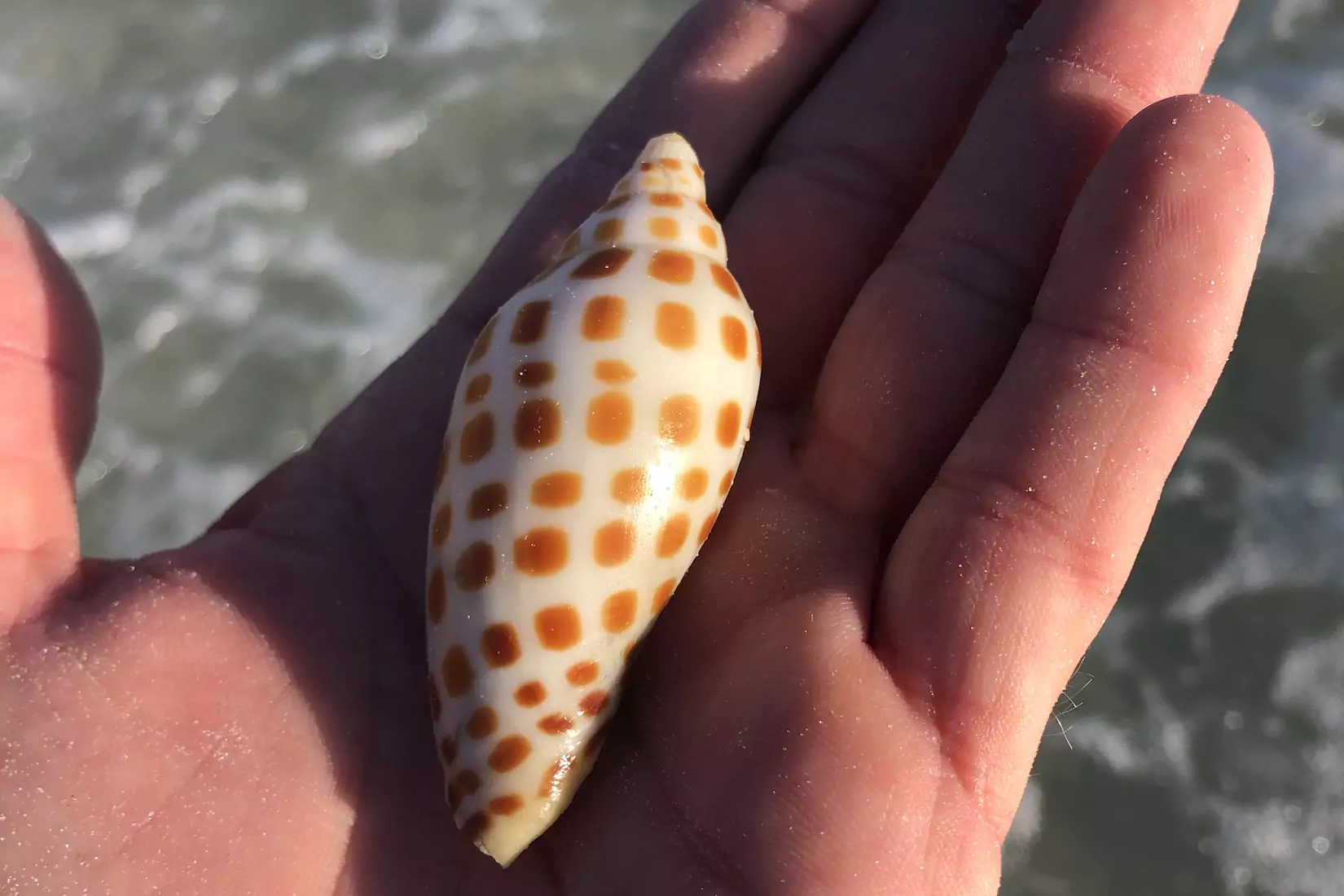
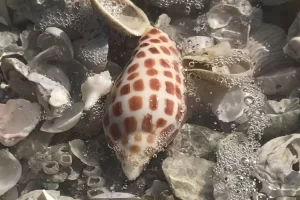 Early Mornings at Sunrise
Early Mornings at Sunrise